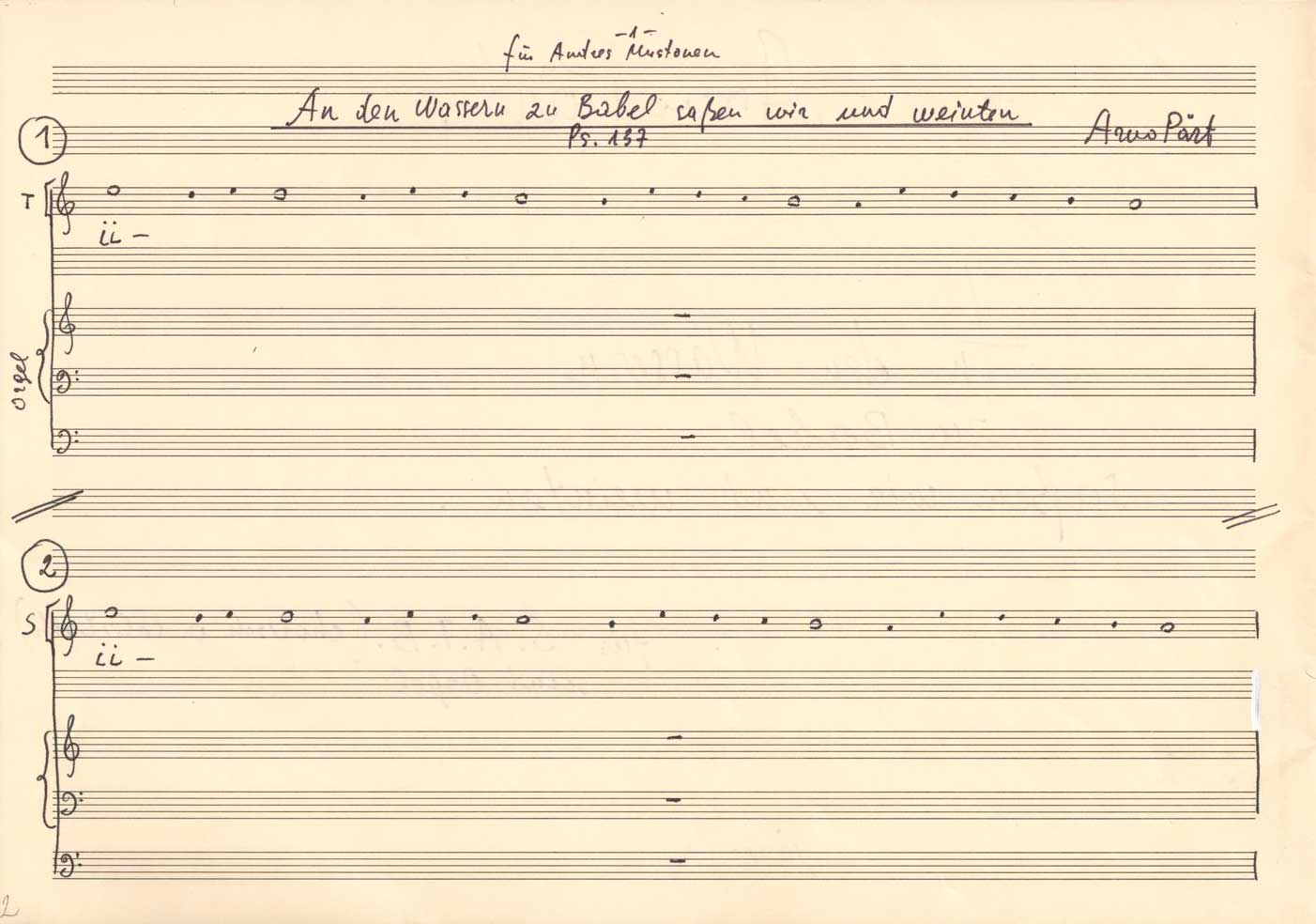Scored for
Duration
7–8 min
Short description
The original version of the piece for voices (S, A, T, B) and freely chosen early music instruments was composed in 1976 and carries the title In spe. Under that title, the piece was also premiered on 27 October 1976 at the Estonia Concert Hall, performed by the Hortus Musicus ensemble, to whom the composition is also dedicated.
In musical terms, it is a work in rigorous tintinnabuli technique, based on extremely sparse and concentrated material. Moving stepwise, the melodies are formed by segments around the main pitch, prolonged note by note, once moving up, once down, according to pre-determined rules. One or more tintinnabuli voices move along the triads corresponding to each melodic voice. These, in turn, are accompanied by one or more pedal not…
World premiere
Composer's recital: Musik von Arvo Pärt
Collegium Vocale Köln , Wolfgang Fromme (conductor)
Completion year
Original version
Dedication
Scored for
Duration
Publishers
Vocal text
Source text
By the rivers of Babylon, there we sat down, yea, we wept, when we remembered Zion.
We hanged our harps upon the willows in the midst thereof.
For there they that carried us away captive required of us a song; and they that wasted us required of us mirth, saying, Sing us one of the songs of Zion.
How shall we sing the Lord’s song in a strange land?
If I forget thee, O Jerusalem, let my right hand forget her cunning.
If I do not remember thee, let my tongue cleave to the roof of my mouth; if I prefer not Jerusalem above my chief joy.
Remember, O Lord, the children of Edom in the day of Jerusalem; who said, Rase it, rase it, even to the founda¬tion thereof.
O daughter of Babylon, who art to be destroyed; happy shall he be, that rewardeth thee as thou hast served us.
Happy shall he be, that taketh and dasheth thy little ones against the stones.
